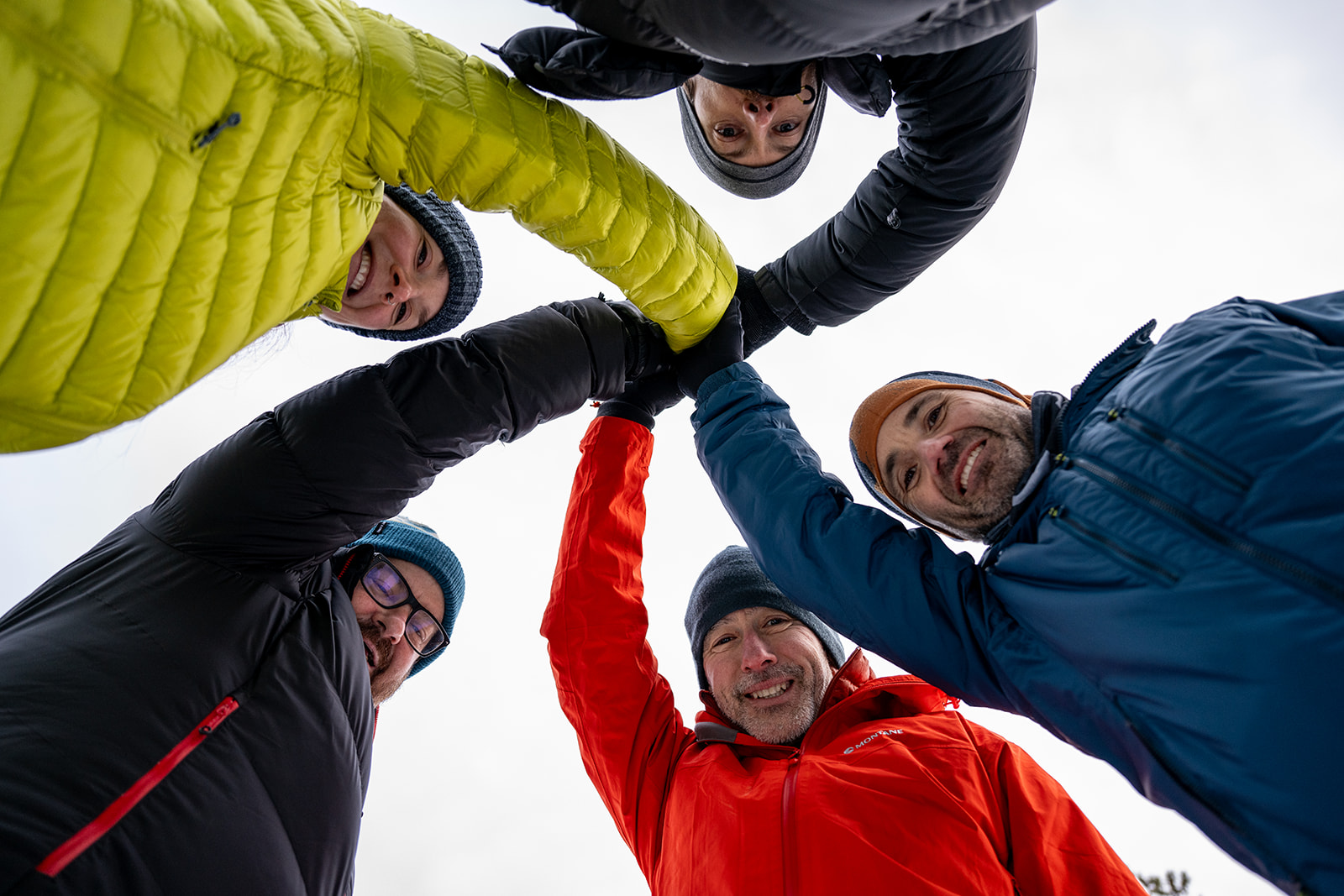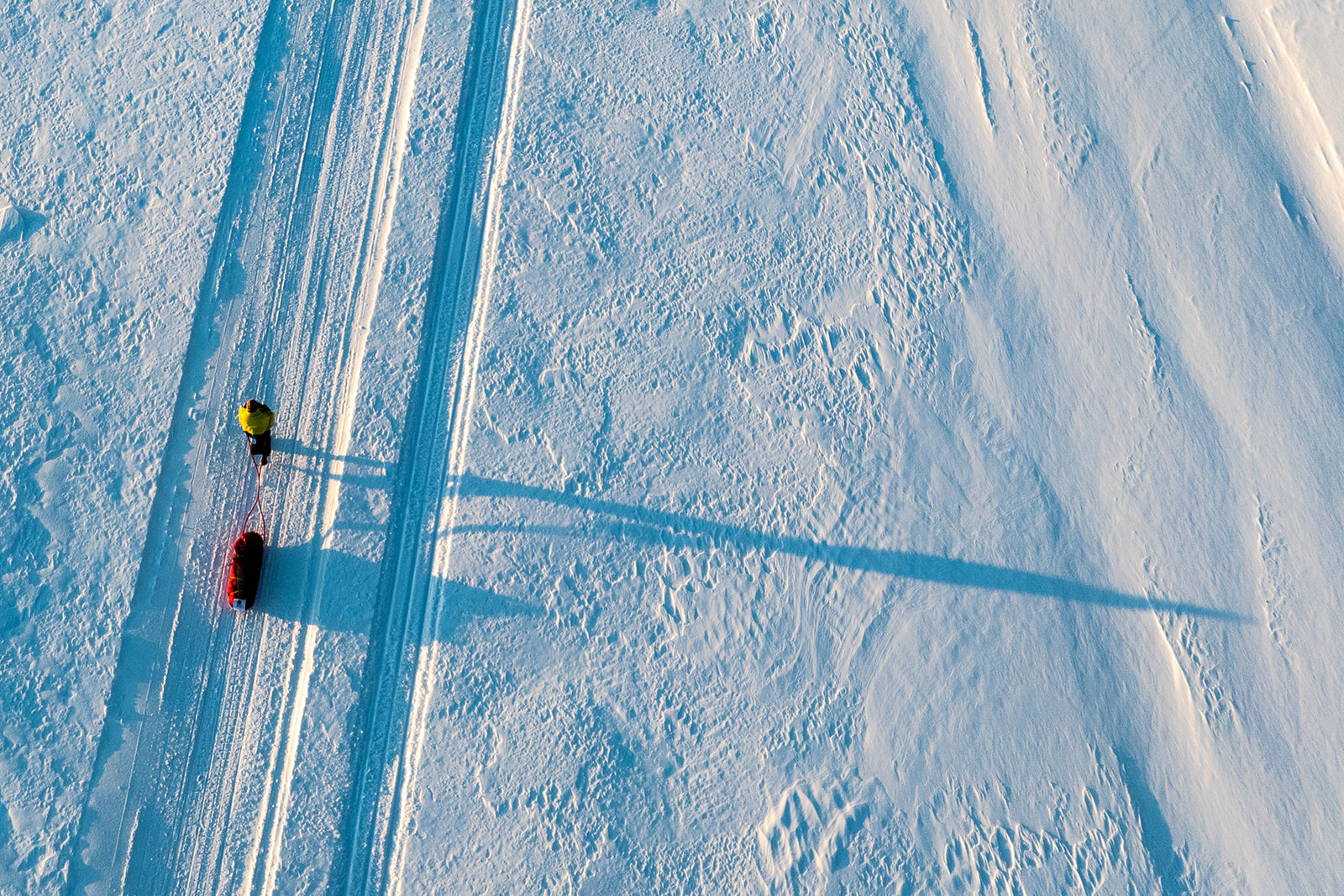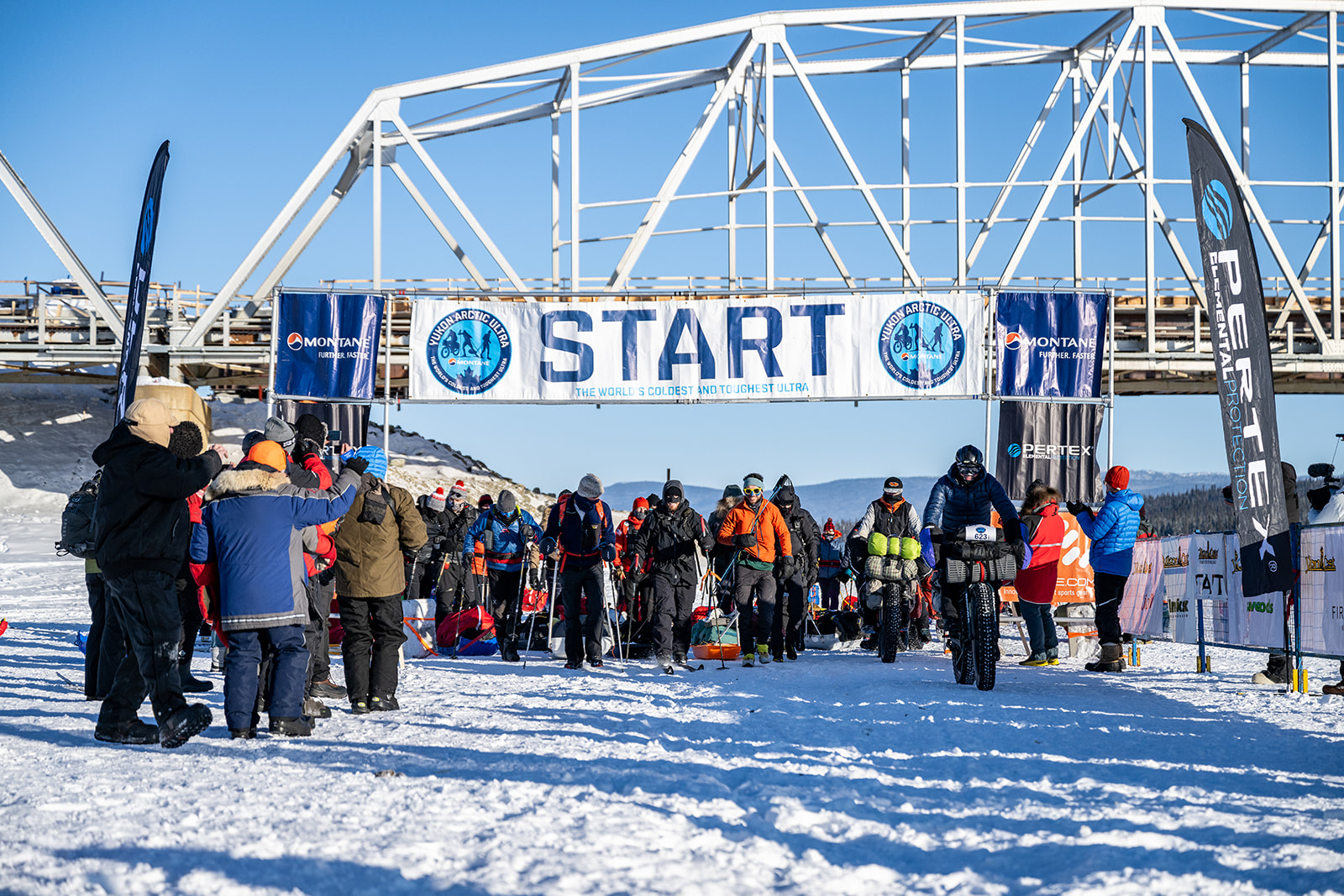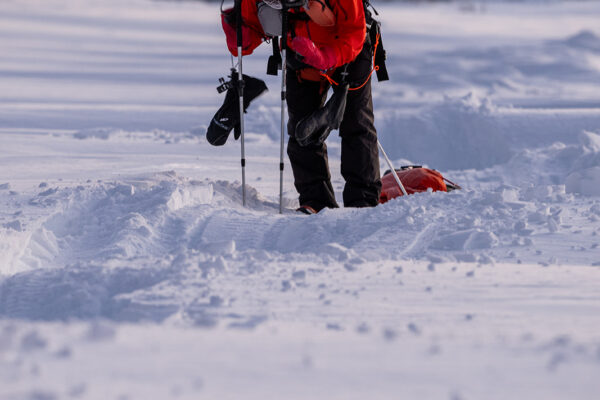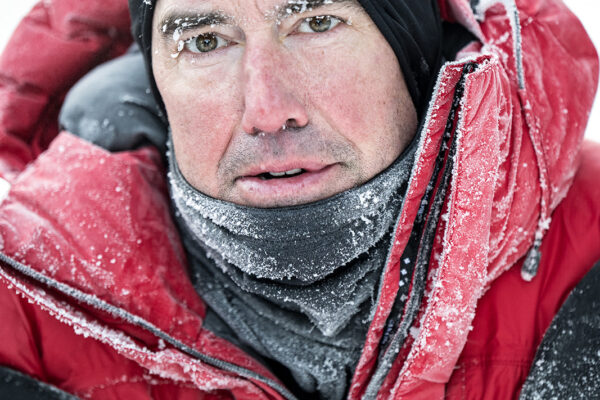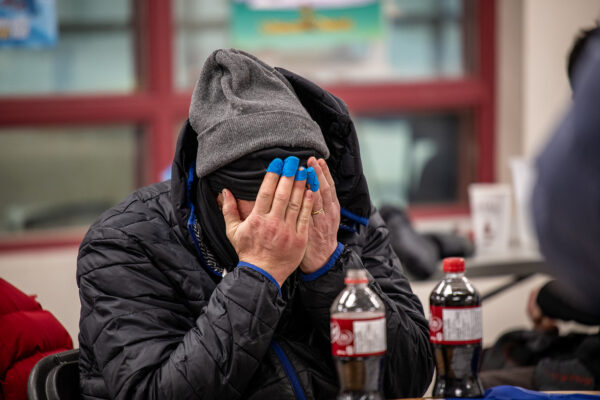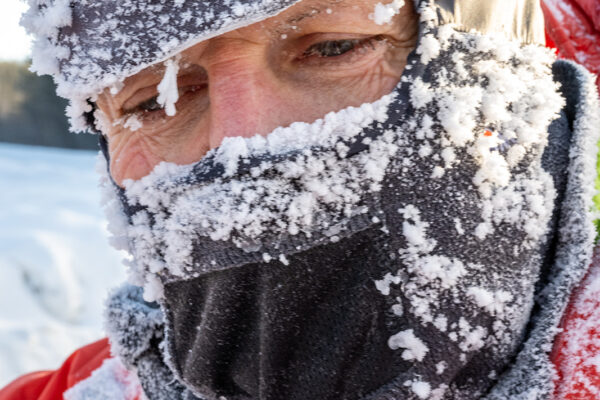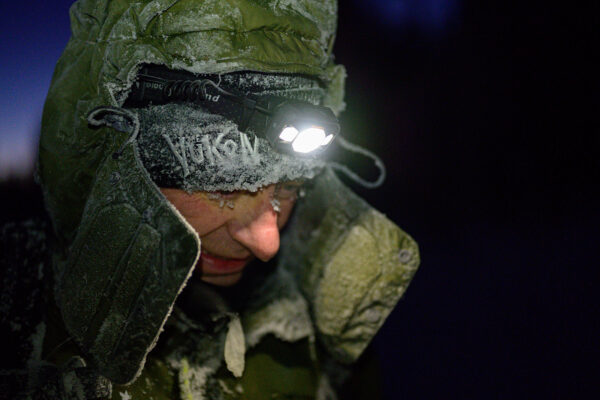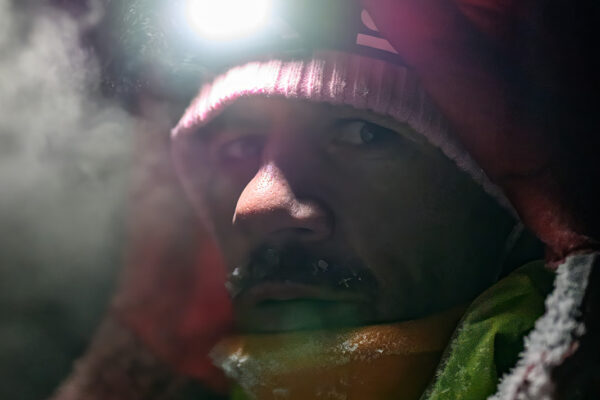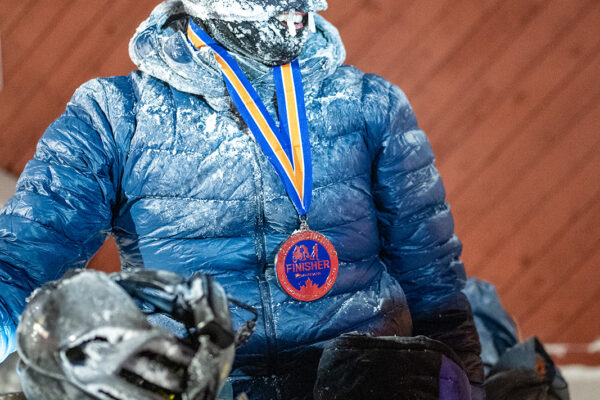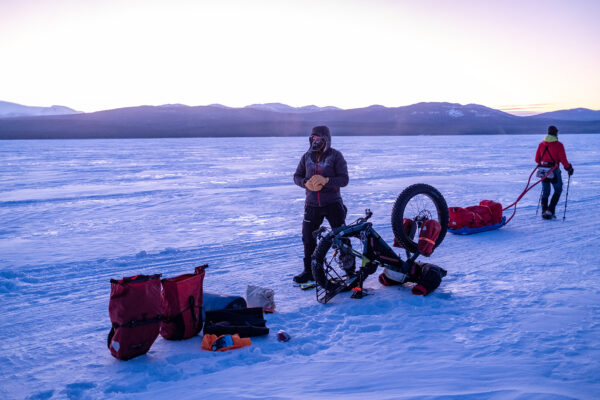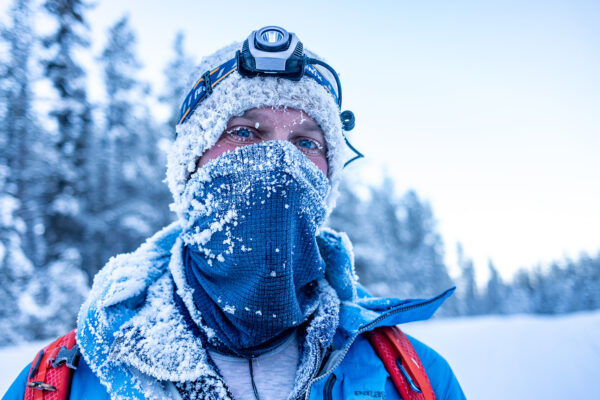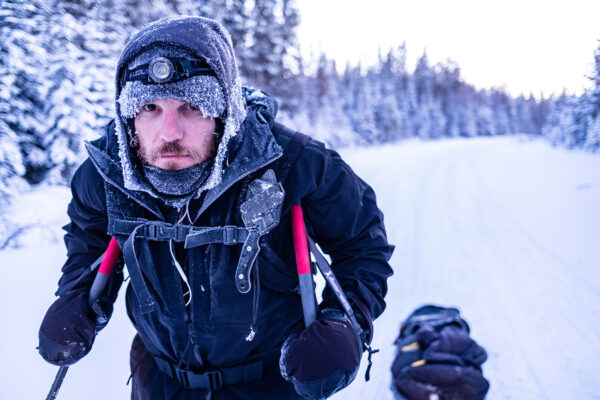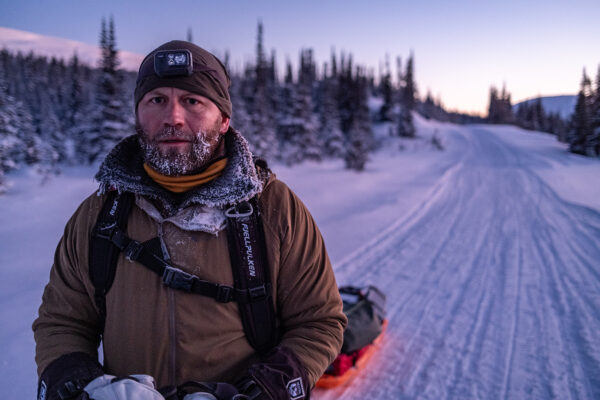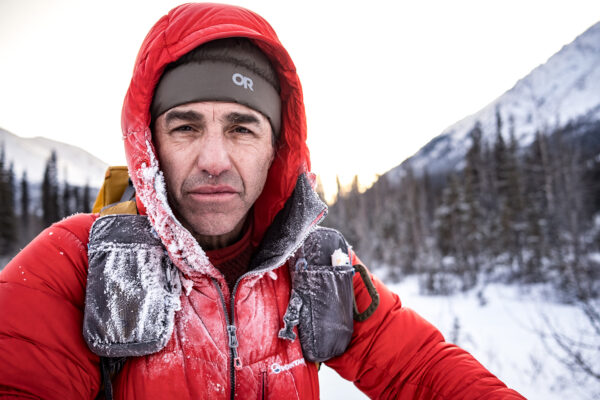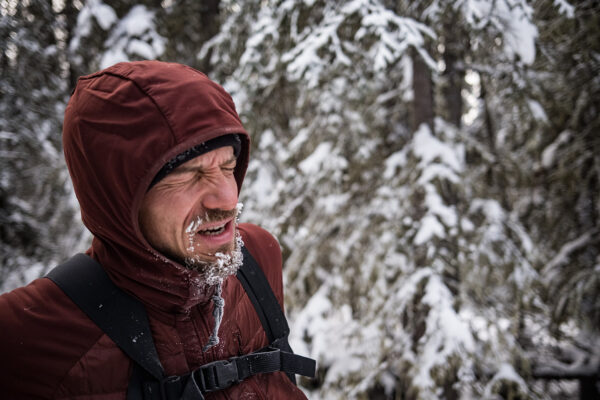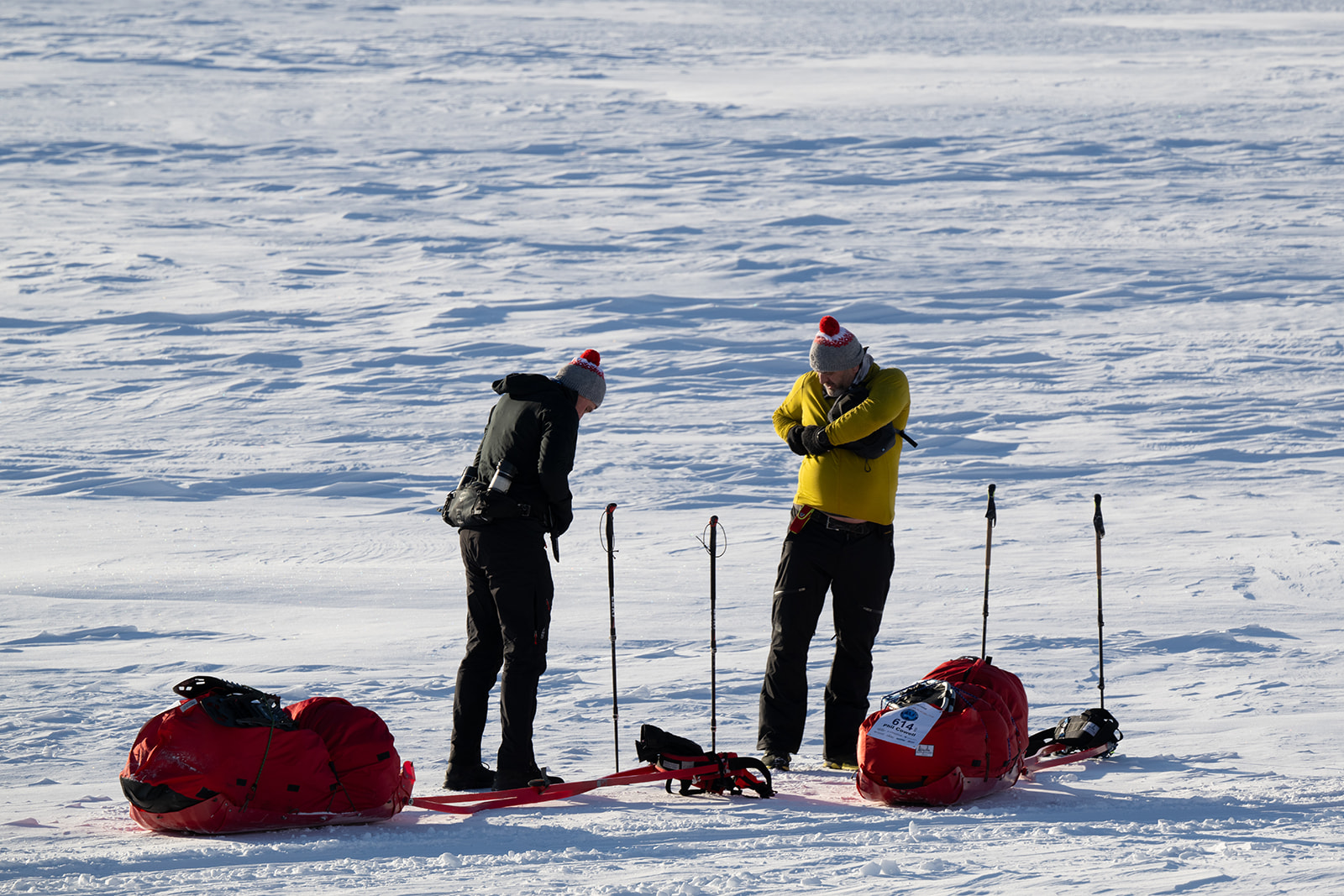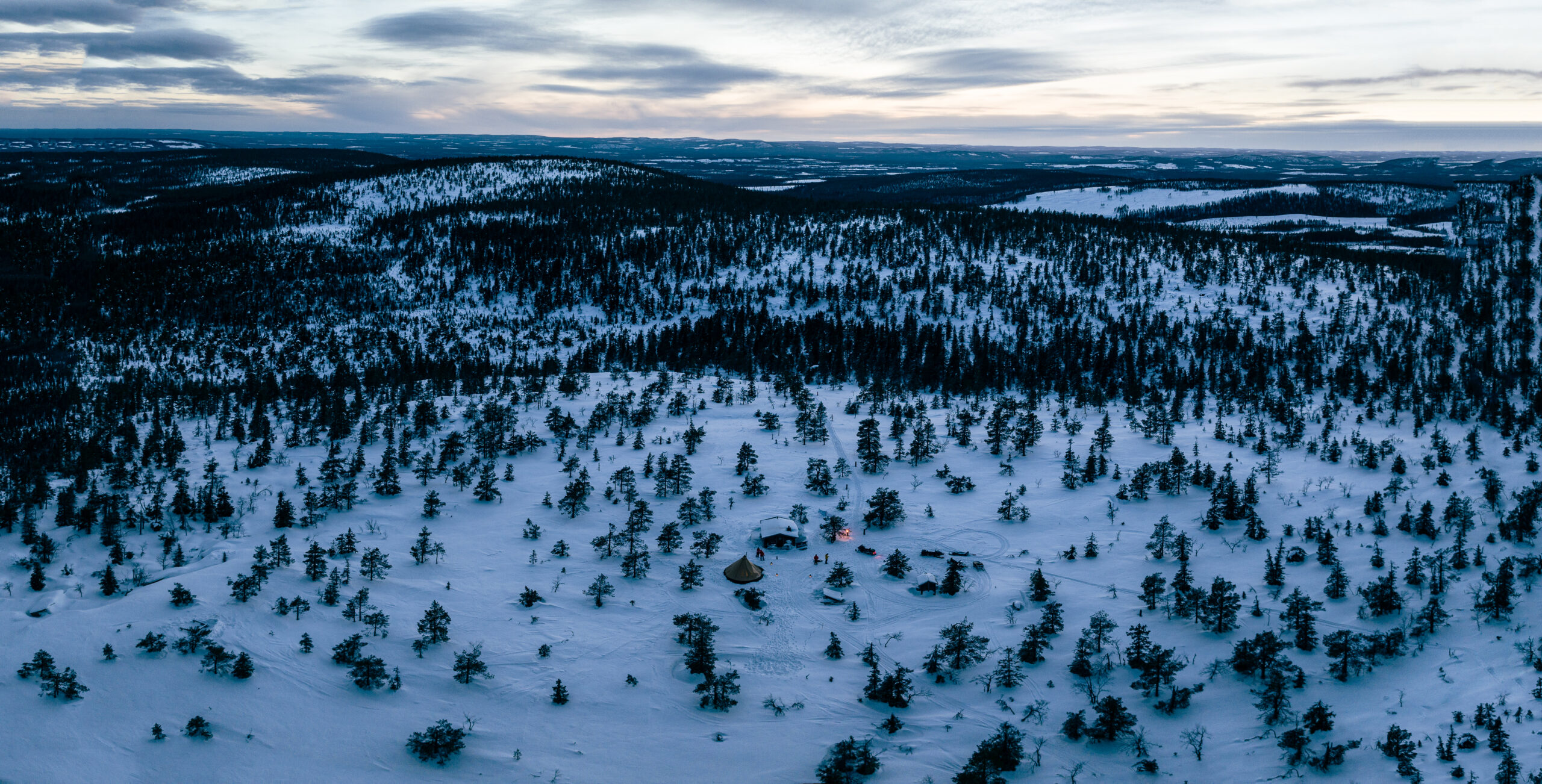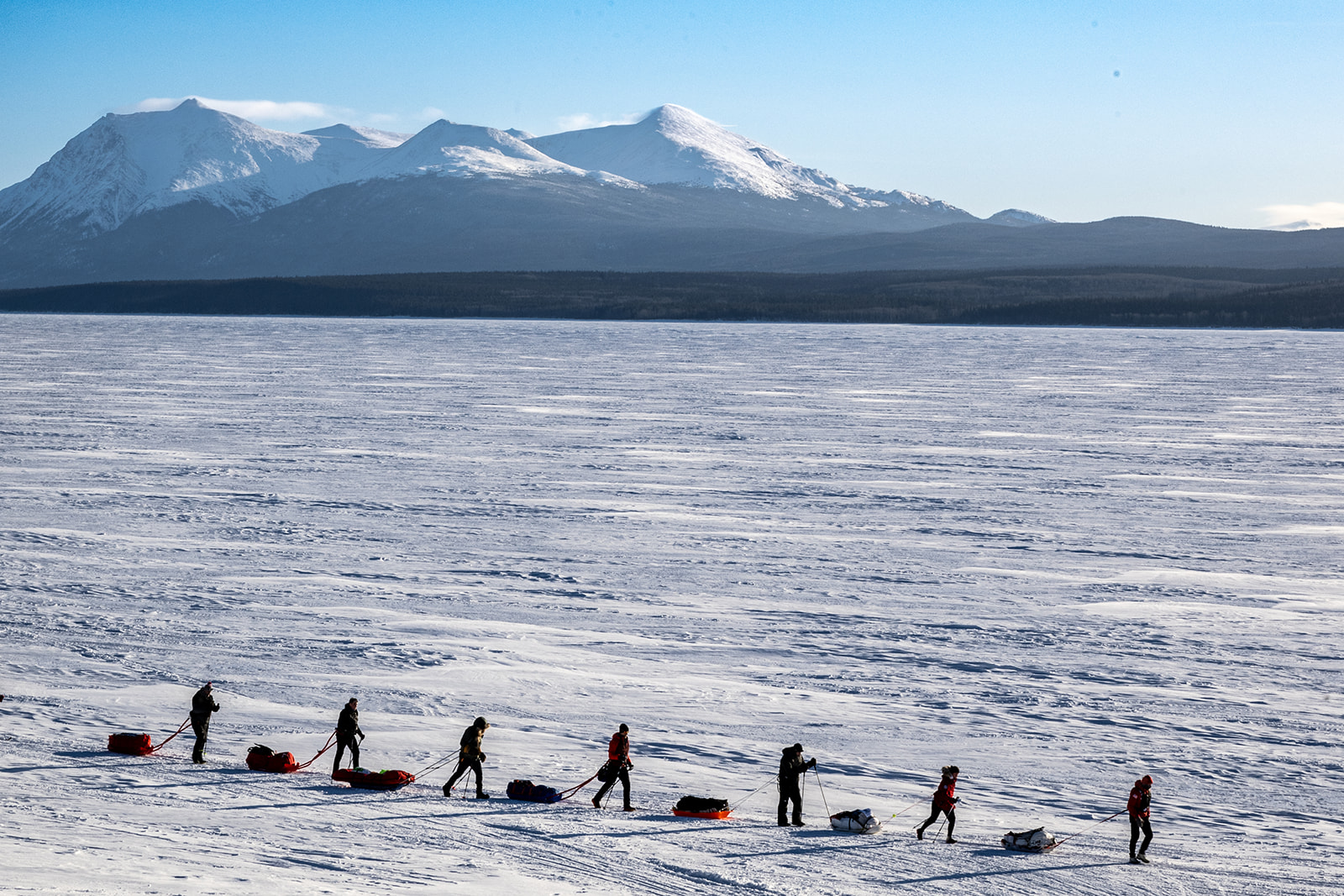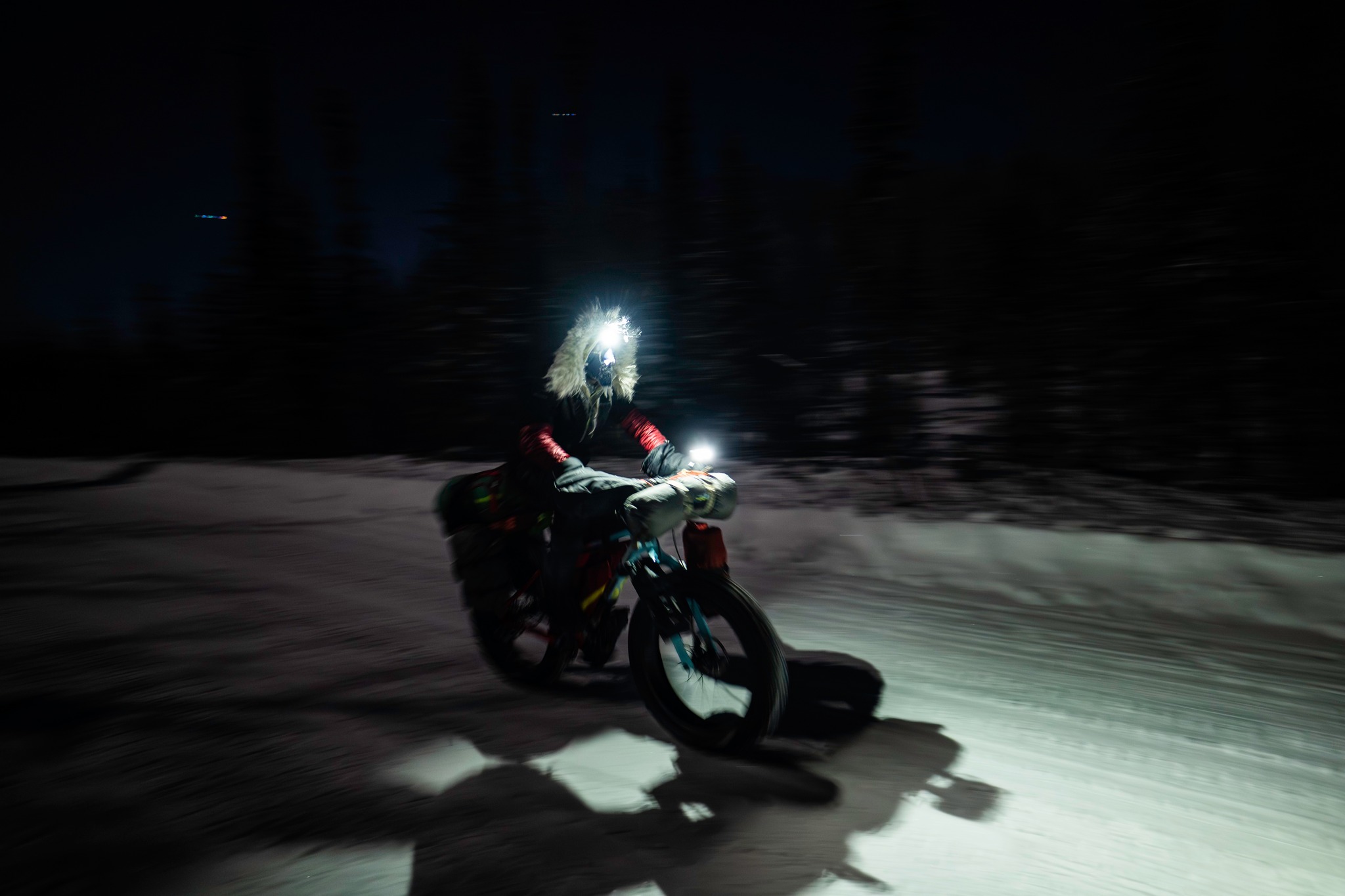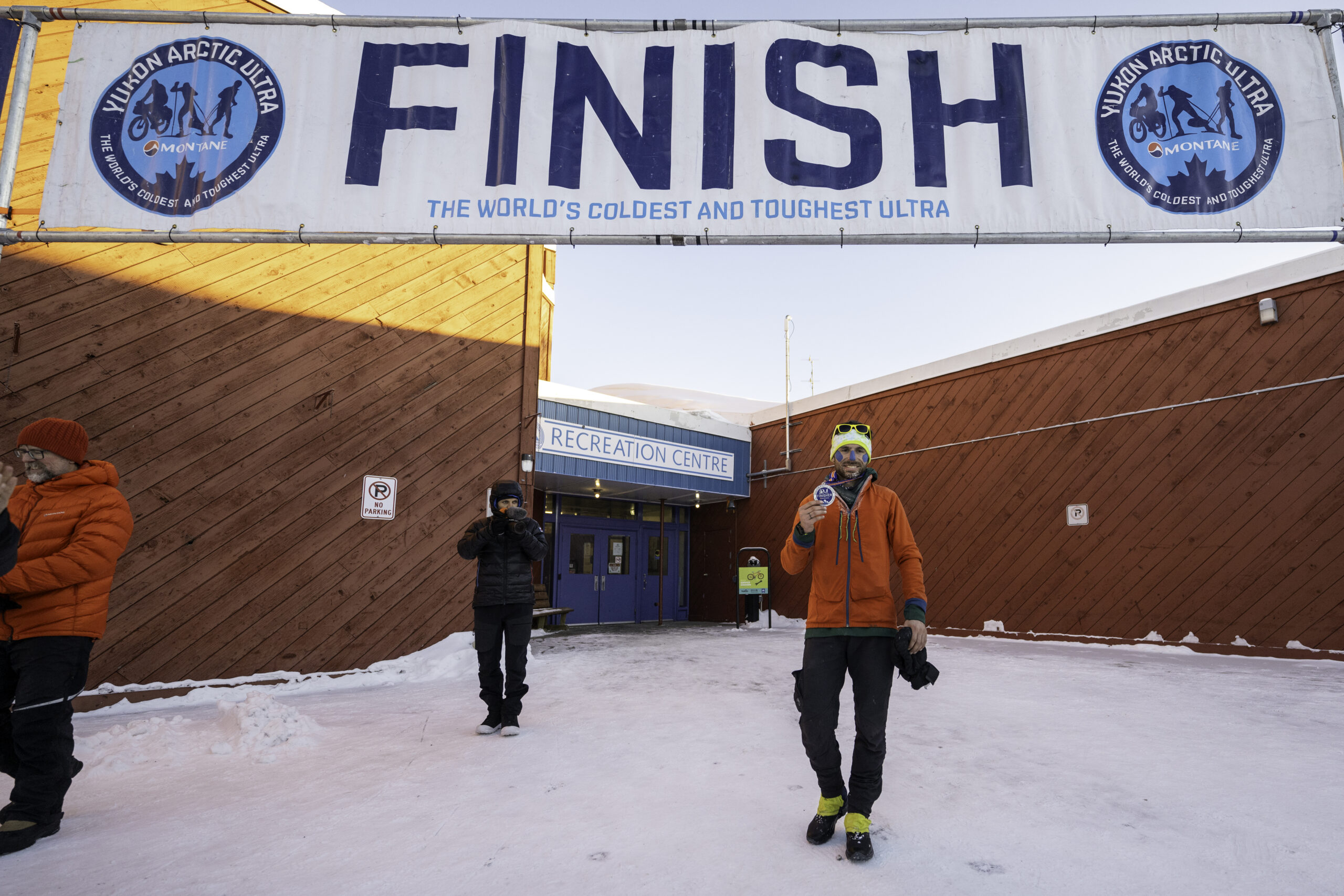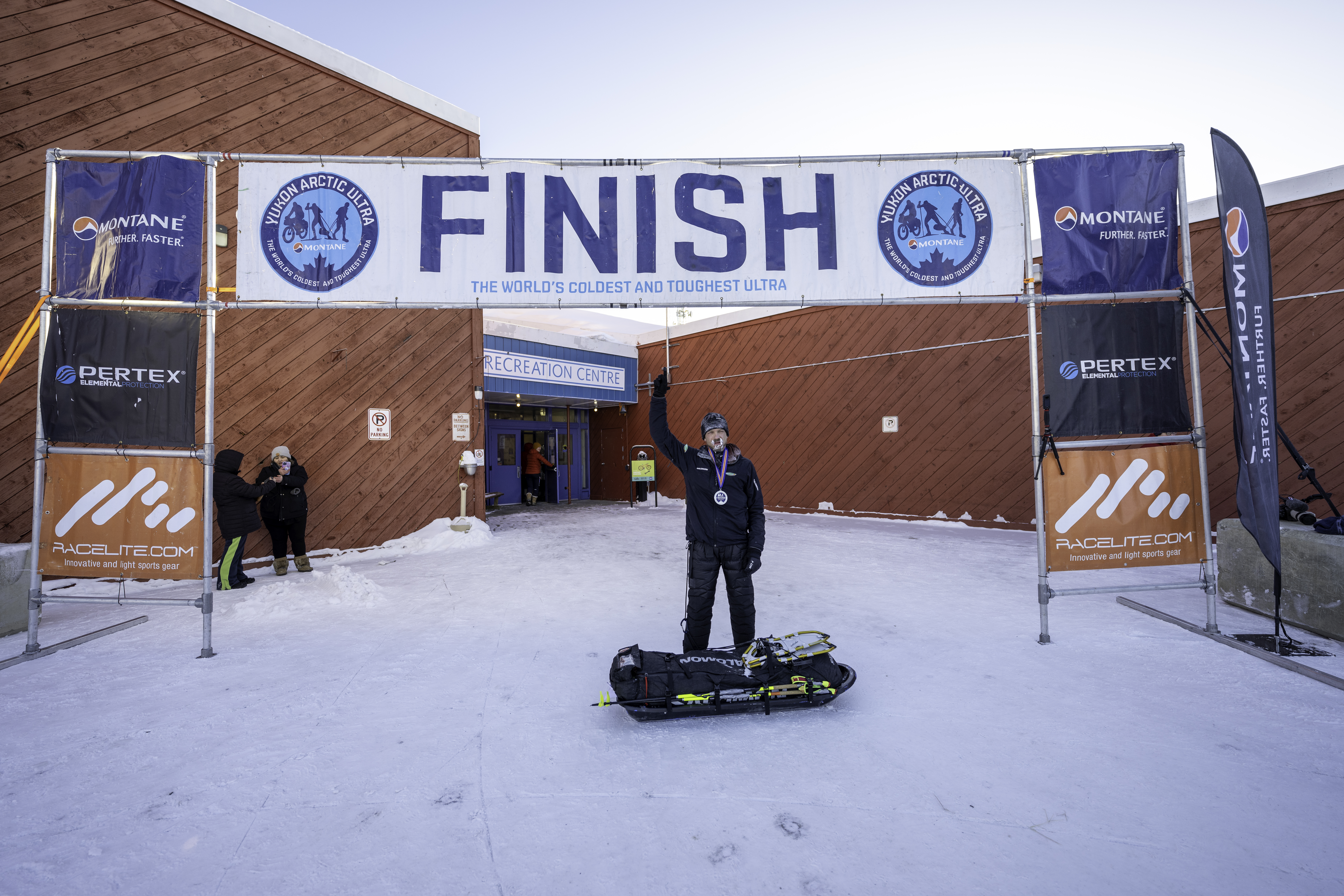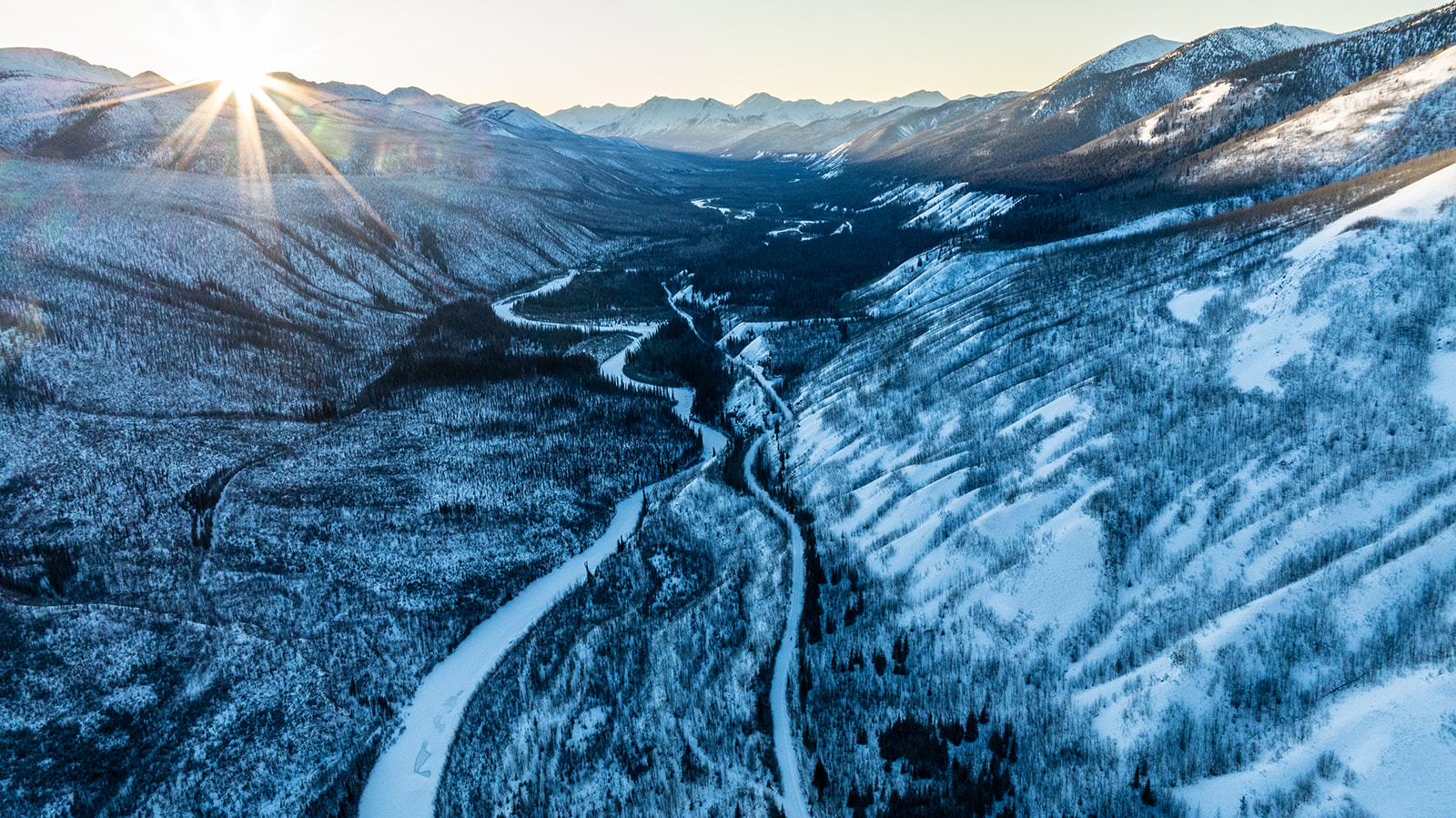
Copyright: markkellyphoto.com
The Montane Yukon Arctic Ultra 2025 was one for the books – a challenging and intense edition. Before diving into the details, I want to apologize to those who were looking for more frequent updates on this website. Our primary focus for race news is our facebook group and instagram page, and while we try to update the website when possible, this year’s event was simply too busy.
A new route, a new challenge
This year, our adventure took us onto new trails, making the race feel different, even for veteran athletes and crew. Exploring a new region of the wild Yukon was both exciting and daunting. The shift in location meant changes to our traditional distances – we offered a 350 km and 600 km race instead of the usual marathon, 100, 300, and 430-mile categories. Additionally, we had to start in the afternoon rather than in the morning, a factor that many athletes found difficult as it meant fewer daylight hours before a long, grueling night. The first checkpoint was also farther than usual, and with temperatures plunging to -40°C, the night of February 2nd proved extremely challenging, even for seasoned participants.
The race begins
We kicked off on February 2nd at 15:25, shortly after the Quest mushers departed Teslin. It was a crisp but sunny day, and thanks to the Teslin Motel and the community rec center, our athletes had a warm space to prepare, eat, and hydrate before setting out. Thanks to Sandy and Frank from Johnson’s Crossing we knew we would have great food at Brooks Brook CP1 and thanks to Sue Smith and her family we had a house for crew to fill flasks, feed the athletes and do medical checks upon arrival. As always is the case, at some point CP1 got extremely busy. The crew worked very hard to help everyone out as soon as possible. The athletes were told in the race briefing that CP1 and also the following three checkpoints would not give them the opportunity to go inside for any length of time, nor provide good opportunities to dry kit. However, hearing it and experiencing it firsthand are two very different things. After long hours in the brutal cold, the natural instinct is to seek warmth, but for many, it was no longer a choice. Some arrived with frostbite, detected through medical checks, while others made the difficult decision to scratch due to exhaustion and extreme cold. Consequently, CP1 was packed with athletes trying to warm up while waiting for transport back to Whitehorse. Some never made it that far, needing assistance to reach the checkpoint, while others pushed on but later had to withdraw – some at our parked RV at Johnson’s Crossing, at the beginning of the South Canol Road.
Frostbite & the harsh reality
I’ll likely dedicate a separate post to frostbite in the MYAU, but for now, I want to stress that every athlete is well aware of the risks. Spending extended periods outside in -40°C almost inevitably leads to cases of frostbite. We educate our athletes on cold injury prevention, conduct medical checks, and ensure that those needing assistance in remote areas are rescued efficiently. If a participant is stranded in a place with no road access, such as our first wall tent checkpoint on the South Canol Road, air transport may be necessary. While this may sound dramatic to the public, and the media loves to sensationalize such events, the reality is that it’s simply the best way to ensure an athlete’s safety and recovery. Air rescue is always preferable when prolonged ground transport could worsen injuries. Every athlete is insured for this type of situation.
During those first few days – and throughout the race -calm decision-making was key. We’re grateful that everyone made the right calls when necessary. However, for those considering future MYAU participation, remember that frostbite recovery takes time, even in mild cases. While most athletes who sustained injuries this year have already reached out to us or our crew with messages of thanks, full healing is a slow process.
The journey continues
After day one, our athletes faced the relentless ups and downs of the South Canol Road, with temperatures still dropping to -35°C or lower. This resulted in more withdrawals at Quiet Lake and beyond. Some required EMS assistance and helicopter evacuations, preventing long and risky snowmobile rides that could worsen their injuries.
Despite the extreme conditions, some athletes thrived. Leading the 600 km race was Harm Feringa (USA) on his fatbike, with Joaquin Candel (USA) and Jessie Gladish (Canada) close behind. Among the foot athletes, Mathieu Blanchard (Canada), Guillaume Grima (France), Matt Weighman (UK), and Daniel Benhammou (USA) stood out, along with Kevin Crowe (Canada), Pascal Bley (Belgium), Kasper Vanherpe (Belgium), Tim Young (Australia), Rebecca Ferry (UK), and Phil Cowell (UK). The 350 km race, however, had been hit hard – only rookie Maurizio Papaleo from Italy remained.
At Lapie Lake, Tim and Rebecca made the tough decision to withdraw. Although they weren’t facing severe issues, the sight of so many fellow athletes succumbing to frostbite had taken a toll on their confidence. In a race like this, knowing when to stop is just as important as knowing how to push forward. And of course athletes also dropped out for other reasons, among them trench foot and old injuries flaring up again.
The final push
For 600 km participants, the challenge continued with a 120 km out-and-back on the legendary North Canol Road. Thankfully, before taking on this segment, they were able to rest properly indoors for the first time, thanks to the Ross River Dena Council’s hospitality. Originally, we had planned two wall tent checkpoints along this stretch, but thanks to local crew members Chris Bemister and Art John, we were able to use cabins, significantly easing logistics. Still, more athletes had to drop out. Kevin suffered from severe back pain, Phil struggled to maintain pace, and Pascal, exhausted from a brutal night, decided to stop at Sheldon Lake. Daniel Benhammou was fine but did decide to take a “short cut” and instead of going on the North Canol Road opted for heading straight onto the Dena Cho trail as an unranked 350 km athlete.
Throughout the race, athletes and crew alike marveled at the breathtaking landscapes of the South and North Canol Roads. The Northern Lights made frequent appearances, providing a stunning reward for the relentless effort. No wonder, this year’s course, with its combination of extreme cold, remote checkpoints, and elevation changes, was quickly deemed harder than previous editions.
The final stretch from Ross River to Faro via the Dena Cho Trail presented yet another unique challenge. After miles of snow-covered roads, athletes suddenly had to navigate a winding hiking trail with steep inclines and declines. Fortunately, they were rewarded with spectacular views and four evenly spaced public cabins stocked with firewood.
The finishers
Harm Feringa blazed down the Dena Cho, finishing in an impressive 148h 55m, securing first place overall and in the fatbike category. Daniel Benhammou was the first to complete the Dena Cho on foot. Maurizio Papaleo, the last remaining 350 km competitor, was granted an additional 24 hours to finish – a cut-off that will now be standard for future 350 km races. However, despite his valiant effort, he was unable to meet the required pace. Therefore, crew who were near him at the time brought him back to Ross River. Yes, that’s a DNF but to have come this far in 2025 as rookie and not sustaining any injuries, that’s an incredible accomplishment!
Mathieu arrived in Faro after 190h and 3m. He had pushed hard all the way. That’s risky business but he made no mistakes and reached each checkpoint without major problems. Upon arriving in Ross River he had not felt 100% and took a good rest. Later on, when it was his time to face the Dena Cho he did as he promised. He took it easy and rested again twice. That did allow Guillaume, who was in second place, to get close a couple of times but in the end, Mathieu was able to reach 2nd place overall and 1st on foot with quite a big gab between him and Guillaume. It was also great to see the mutual respect and cameraderie between the two during and after the race.
Guillaume had done extremely well and some may have been surprised. But I bet all his friends knew and after having seen his performance in our 100 mile race in 2023 – he came 2nd in a time of only 28h and 11m – I was not at all surprised about his speed. Like Mathieu, he pushed very hard but was sensible enough to not get in trouble. Guillaume reached Faro after 193h and 56m.
Then it was time for some more fatbikers to reach the finish line. Jessie reached Faro after 219h and 55m, ranking 2nd on fatbike and 4th overall. After having finished our 430 mile race in all three disciplines, Jessie had actually “retired”. But as soon as she had heard about our new trail she signed up again. In 2025, pretty much from the beginning, Jessie had a nasty cough. Most people would have given up. Not Jessie. She has got this incredible mental strength, that got her through and once again Jessie finished what she had started. Not far behind Jessie, was fatbiker Joaquin. With his finish he became the third athlete (after Enrico Ghidoni and Jessie) to have finished our max. distance race in all three disciplines. As always, he did it with a smile.
Our last athlete to come in, was Kasper. It took Kasper 228h and 52 m. He ranks 6th overall and 3rd on foot. Kasper’s pulk and some other essential kit that he had shipped to Whitehorse had not arrived in time for the start. So, he had to rent equipment. In other words, he had some pretty stressful days leading up to his race. But it did not seem to affect him. He was doing really well from day 1 and paced himself perfectly, storming into the finish line as if he just had started.
Gratitude & looking ahead
A huge congratulations to all finishers! And to those who attempted the race but did not finish, your efforts in such extreme conditions are commendable. Health and safety come first – there’s always another race.
A massive thank you to everyone who made MYAU 2025 possible: our title sponsor Montane, main sponsors Pertex and Racelite, and our local partners, the Sternwheeler Hotel, Total North, Driving Force, Fraserway RV and Coast Mountain Sports. Thank you also Dion for the great snowshoes. Thank you to the Yukon Quest and the Canadian Rangers. Thank you to Teslin, Johnson’s Crossing Lodge, Ross River and Faro for having us as your guests. Thank you to all of my great crew who worked so hard: Sam, Anya, Callum, Peter, Gillian, Trish, Shannon, Sophie, Maud, Claire, Jeffrey and Matthew. Thank you Alexander from the FAZ who was there as a journalist but also helped out when needed. Thank you to all the local crew on snowmobiles and at the checkpoints, Bernard, Gary, Hendrik, Hiro, Liam, Tyler, Robert, Jan, Art, Chris, Bryan, Jason, Joe and Eli. Thank you to our amazing race photographer Mark Kelly. Special thanks also to Gary Vantell for always helping me with anything that comes up year round and requires local support – from transport to receiving shipments and from storage to repairs!
It’s too early to say what 2026 may bring. Once it is decided what trails we can use, I will announce all the details. Now it’s time to travel to Sweden for the Bright EQ Lapland Arctic Ultra!


